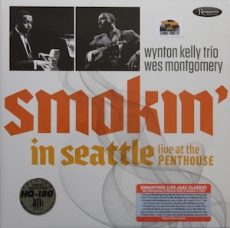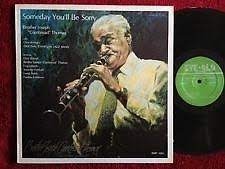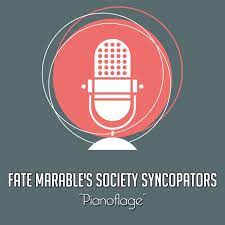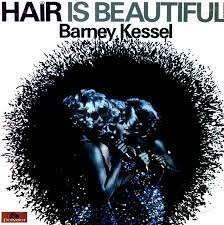
Requisites
Smokin’ In Seattle: Live at The Penthouse ~ Wynton Kelly Trio and Wes Montgomery | By Eddie Carter
I’ve been a fan of The Wynton Kelly Trio and Wes Montgomery since I was eleven and first heard Full House and Smokin’ at The Half Note. So, I was extremely happy to pick up a copy of Smokin’ In Seattle-Live at The Penthouse (Resonance Records HLP-9029), their 1966 live date over two nights from the Seattle, Washington jazz club. Jim Wilke of radio station KING-FM hosted a weekly half-hour program from The Penthouse, and he’s our Master of Ceremonies for the two sessions. The personnel for both dates are Wynton Kelly on piano, Wes Montgomery (tracks: A3 to A5, B3 to B5) on guitar, Ron McClure on bass, and Jimmy Cobb on drums. My copy is the 2017 US Mono audiophile release.
Jim Wilke kicks off Side One by welcoming the crowd and introducing the trio who opens with There Is No Greater Love by Isham Jones and Marty Symes. The group swings effortlessly through the melody, setting up Wynton’s spirited first solo. Ron comes in next for a lively presentation. Wynton and Jimmy share a brisk conversation in the closing statement leading to the song’s climax. Not a Tear by Rudy Stevenson begins deceptively like a ballad before the beat moves upward to an aggressive theme. Kelly has the song’s only solo and stretches out in a marvelous interpretation preceding the theme’s restatement.
Wes Montgomery joins the group on his original tune, Jingles. The quartet takes off on an upbeat theme. Wes goes right to work on an enthusiastic interpretation that bounces along into the foursome’s energetic finale. Up next is the poignantly beautiful standard by Bob Haggart and Johnny Burke, What’s New? The group also gives a pretty rendition of this tune on Smokin’ at The Half Note. Kelly begins with a politely touching introduction, segueing into the song’s gorgeous melody. Montgomery delivers a very personal performance in the song’s only solo ahead of the foursome’s gentle ending.
The first side ends on an upbeat note with the guitarist’s Blues In F. The group lays an impressive blueprint on the opening chorus. Wes has the solo spotlight to himself and delivers an exciting flow of ideas that sadly fade out due to the program’s time constraints. Mr. Wilke starts Side Two with his introduction to The Wynton Kelly Trio, who play The Theme, briefly starting their first number, Sir John, by Blue Mitchell. After the trio states the melody, Kelly gets his teeth into a brilliant opening statement. McClure lets his bass do the talking in the following solo before the pianist makes a few final comments, leading to the theme’s reprise.
If You Could See Me Now by Tadd Dameron and Carl Sigman is also on Smokin’ at The Half Note. The trio works together beautifully from the start of Wynton’s lush introduction. As the song’s only soloist, Kelly reveals the warmth and tenderness anchored by Ron’s and Jimmy’s support. West Coast Blues is a Montgomery original from Movin’ Wes. It comes to life with the guitarist’s introduction, segueing into the foursome’s easygoing theme. The song’s only solo belongs to Wes, and he delivers the goods to an infectious beat that is sure to have the listener tapping their feet ahead of the close.
O Morro Não Tem Vez by Antonio Carlos Jobim and Vinícius De Moraes is a beautiful Brazilian song and a highlight of the album Goin’ Out of My Head. Jimmy gets things going with a percussion introduction that blossoms into a lovely melody. Wes gets to stretch out and delivers a gorgeous performance preceding the foursome’s return for the theme’s restatement and climax. The album and set concludes with Oleo by Sonny Rollins. The ensemble starts things off with a zesty melody, then steps aside for Wes to take charge of the song’s only statement that concludes with a slow dissolve into nothingness.
Zev Feldman and George Klabin produced Smokin’ In Seattle. Jim Wilke was the original recording engineer, and Bernie Grundman mastered the album. The record was pressed on 180 grams of audiophile vinyl, and the album’s sound quality is quite good for a sixties live recording. The listener is transported to the club audience as the musicians are performing. The record is also incredibly quiet until Jim Wilke speaks. If you’re a fan of The Wynton Kelly Trio and Wes Montgomery, I offer, for your consideration, Smokin’ In Seattle the next time you’re out record-shopping. The music is simply amazing, and this is an album you shouldn’t miss for a spot in your library!
~ Full House (Riverside RLP 434/RS 9434), Goin’ Out of My Head (Verve Records V-8642/V6-8642), Movin’ Wes (Verve Records V-8610/V6-8610), Smokin’ at The Half Note (Verve Records V-8633/V6-8633) – Source: Discogs.com ~ If You Could See Me Now, Oleo, There Is No Greater Love, What’s New? – Source: JazzStandards.com
© 2023 by Edward Thomas Carter
More Posts: choice,classic,collectible,collector,history,instrumental,jazz,music,piano

Daily Dose Of Jazz…
Joseph William Thomas was born on December 3, 1902 in New Orleans, Louisiana. His first professional gig was in his home city with trombone player Joe Harris in 1923. Soon after that, he worked with Jack Carey, Chris Kelly, and Kid Rena. He recorded with Charles Derbigny in 1941, but the recordings were not publicly released until the 1960s, by which time Thomas had become a figure in the Dixieland revival movement.
He led his own ensemble at New Orleans’s H&J Tavern for much of the 1940s, then in 1951, he became a sideman for Papa Celestin. He worked with this ensemble for years, including after Papa French and Eddie Pierson had taken over as leader.
Other associations in the 1950s and 1960s included work with Freddie Kohlman, Punch Miller, the Olympia Brass Band, and on Swedish television with Sweet Emma Barrett in 1968. In the 1970s he worked with the Legends of Jazz, replacing Joe Darensbourg.
Clarinetist and vocalist Joe Thomas, also known as Brother Cornbread and was closely associated with the New Orleans jazz scene, February 18, 1981 in New Orleans at 78.

Daily Dose Of Jazz…
Fate Marable was born on December 2, 1890 in Paducah, Kentucky. His mother was a piano teacher who gave her son music lessons, both in reading music and playing piano. At the age of 17 he began playing on the Mississippi River steamboats. John and Joseph Streckfus hired him to replace their piano player, Charles Mills, who had accepted an engagement in New York City.
Later in 1907 he became bandleader for a paddlewheeler on the Streckfus Line running between New Orleans, Louisiana and St. Paul, Minnesota, a position he retained for 33 years. Later he spent late nights in New Orleans’ clubs scouting for talent and playing at jam sessions. There he discovered Louis Armstrong blowing cornet, and recruited him to play for his band on evening riverboat excursions cruising around the Crescent City.
As a bandleader, Marable shared the lessons from his mother with his musicians as many of the musicians he hired played by ear. He augmented their skills by teaching them to read music, and expected them all to learn how to play from sheet music on sight. His training boosted many of the musician’s careers when they were ready to move on. They went on to play with bandleaders such as Cab Calloway, Count Basie, Duke Ellington, Jimmie Lunceford, Fats Waller, and Chick Webb.
Members of Marable’s bands were expected to be able to play a wide variety of music, from hot numbers to light classics, playing by memory or ear, and from sheet music. As a strict bandleader he demanded musical proficiency and rigid discipline from all his band members as they developed their individual strong points. His band served as an early musical education for many other players who would later become prominent in jazz, including Red Allen, Baby Dodds, Johnny Dodds, Pops Foster, Erroll Garner, Narvin Kimball, Al Morgan, Jimmy Blanton, Elbert Pee Wee Claybrook, Joe Poston, and Zutty Singleton.
Pianist and bandleader Fate Marable, who published the only original composition of his career, Barrell House Rag, co-written with Clarence Williams in 1916, transitioned from pneumonia in St. Louis, Missouri on January 16, 1947 at 56 years old.
More Posts: bandleader,history,instrumental,jazz,music,piano

Daily Dose Of Jazz…
Ike Isaacs was born on December 1, 1919 in Rangoon, Burma and was self-taught on guitar. He started playing professionally in college while pursuing a degree in chemistry. Moving to England in 1946, he became a member of the BBC Show Band.
During the 1960s and Seventies, he was a member of the Hot Club of London, led by guitarist Diz Disley, who often collaborated with Stéphane Grappelli. He was a member of the band Velvet with Digby Fairweather, Len Skeat, and Denny Wright.
He recorded not only with Grappelli but with Ted Heath, Barney Kessel, Barry Gray, Jake Thackray, Martin Taylor and Stan Tracey. In the 1980s, he moved to Australia and taught at the Sydney School of Guitar.
Guitarist Ike Isaacs, best known for his work with violinist Stéphane Grappelli, transitioned from cancer on January 11, 1996 at the age of 76 in Sydney, Australia.



